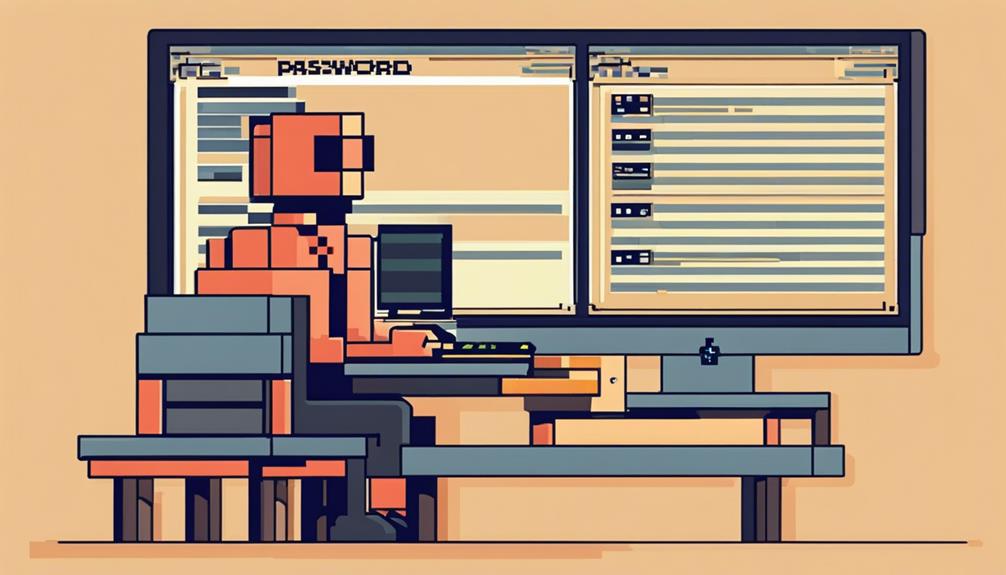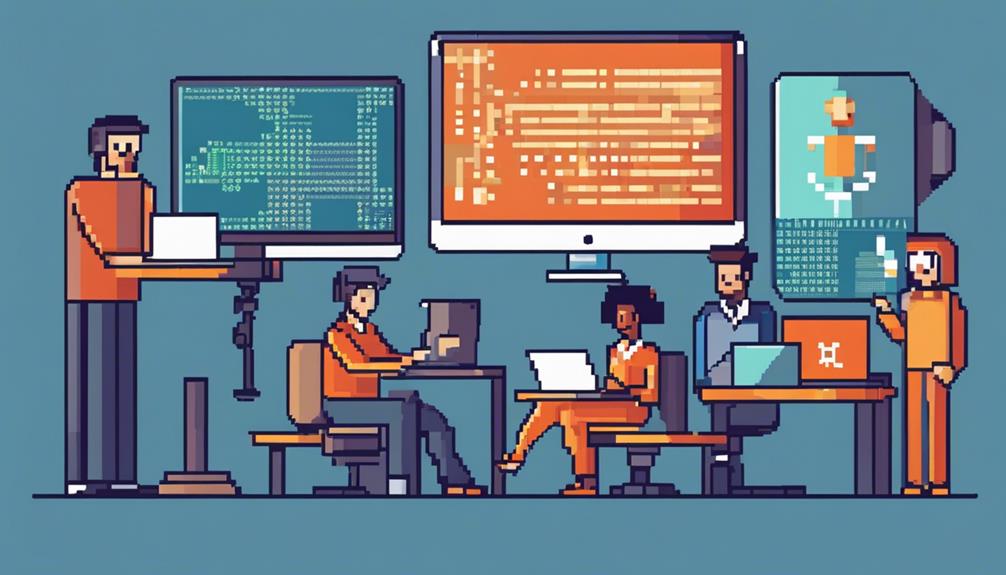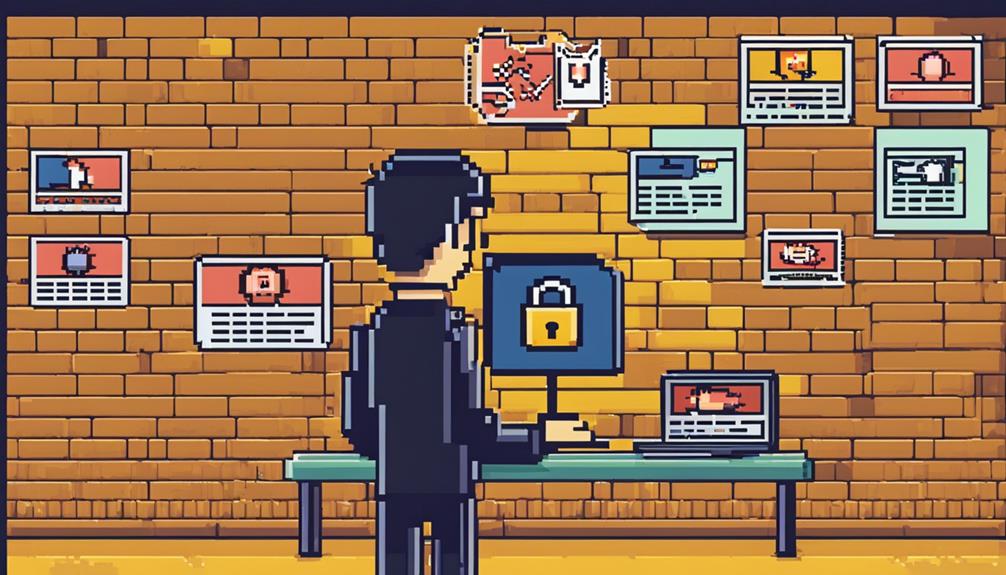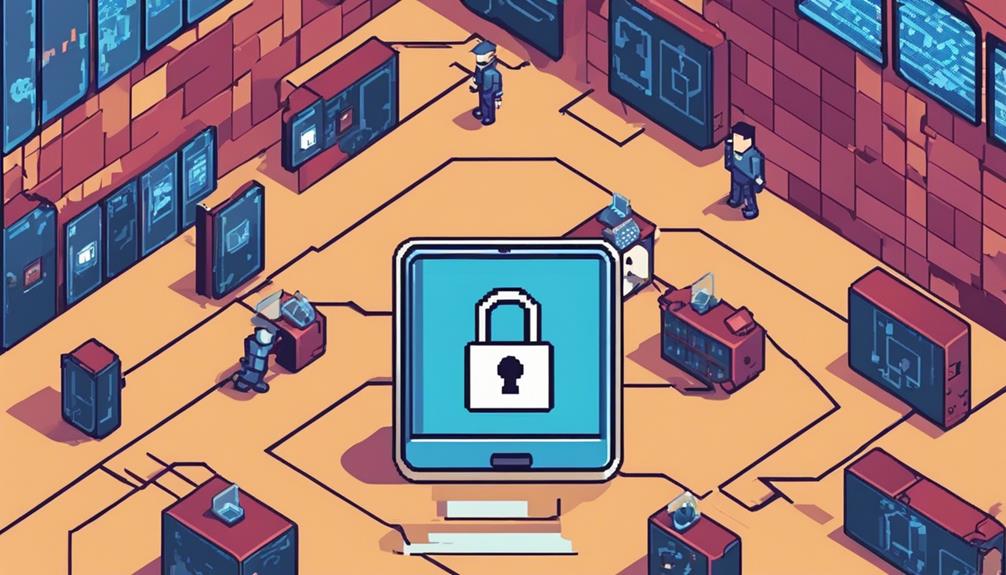Protect against hackers by using strong passwords, multifactor authentication, and updating software regularly. Be cautious on public Wi-Fi, educate on phishing awareness, encrypt devices, and stay vigilant against social engineering. Implement cybersecurity best practices, like secure networks and employee training. Safeguard accounts with unique passwords, updated frequently, and use two-factor authentication whenever possible. Prioritize cybersecurity to protect against cyber threats effectively.
Key Takeaways
- Implement robust security measures to safeguard against hackers.
- Utilize strong, unique passwords and enable two-factor authentication.
- Regularly update software to patch vulnerabilities and prevent cyber attacks.
- Educate individuals on phishing awareness to avoid falling prey to scams.
- Be cautious on public Wi-Fi, use VPNs, and encrypt devices for enhanced security.
Cybersecurity Best Practices
In the domain of cybersecurity best practices, implementing robust security measures is essential to safeguarding sensitive information from potential hacker threats. Cybersecurity best practices encompass a range of strategies aimed at protecting individuals and organizations from data breaches and cyber attacks.
Utilizing two-factor authentication, regularly updating software to patch security vulnerabilities, and ensuring secure Wi-Fi networks can greatly reduce the risk of unauthorized access to sensitive information. Phishing emails, a common tactic used by hackers, can be mitigated through employee training and awareness programs.
Additionally, enabling firewall protection adds an extra layer of defense against malicious activities. By following these cybersecurity best practices, individuals and businesses can minimize the likelihood of falling victim to cyber threats. It is important to remain vigilant and proactive in implementing these security measures to safeguard valuable data and prevent unauthorized access to confidential information.
Strong Password Protection

To improve your online security, it's vital to create long and complex passwords that include a variety of characters. Additionally, implementing two-factor authentication adds an extra layer of protection to your accounts.
Password Complexity
For enhanced security, ensuring strong password complexity is vital in safeguarding sensitive information from potential hacking threats.
When creating passwords, it is essential to incorporate the following elements:
- Include a mix of upper and lower case letters, numbers, and special symbols to increase the complexity of the password.
- Guarantee passwords are unique for each account to prevent unauthorized access, especially in the event of a data breach.
- Avoid using easily guessable information like birthdays or common words, as these can be exploited by hackers.
To further enhance password security, consider utilizing password managers to generate and securely store complex passwords for different accounts.
Additionally, regularly updating passwords and enabling two-factor authentication adds an extra layer of protection against hacking attempts.
Two-Factor Authentication
Implementing two-factor authentication is an essential step in bolstering account security against potential hacking threats. Also known as 2FA, this method adds an extra layer of security by requiring two forms of verification to access an account, such as codes sent to your phone, biometric scans, or authenticator apps.
By implementing two-factor authentication, the risk of unauthorized access is greatly reduced. Even if a hacker manages to obtain your password, they would still need the second authentication factor to gain entry. Studies have shown that this security measure prevents 99% of hacking attempts, making it an important defense against cyber threats.
Utilizing two-factor authentication is a highly effective way to protect sensitive information and accounts from unauthorized access. It is recommended to enable 2FA wherever possible to enhance the security of your digital accounts and safeguard your data from potential breaches.
Multifactor Authentication Importance

Multifactor authentication (MFA) plays a vital role in bolstering online security. By requiring multiple forms of verification, such as passwords and biometric data, MFA greatly reduces the risk of unauthorized access and data breaches.
Implementing MFA on various accounts is essential to safeguard sensitive information from cyber threats.
Strong Passwords Essential
Enhancing cybersecurity measures, the utilization of strong passwords is essential in safeguarding sensitive information from potential hacking threats.
- Passwords should be strong and unique to deter hackers effectively.
- Multifactor authentication (MFA) greatly reduces the risk of unauthorized access.
- Using a password manager can help manage numerous complex passwords securely.
Hacking incidents often occur due to password weaknesses, with 80% of breaches involving weak or stolen passwords. As a result, it is vital to create strong, unique passwords for each account to prevent unauthorized access.
Implementing multifactor authentication adds an extra layer of security, making it nearly impossible for hackers to breach accounts. Additionally, avoid password recycling, as reusing passwords across multiple accounts poses a significant risk.
To manage multiple strong passwords effectively, consider using a password manager. By securing your password manager with multifactor authentication, you can further bolster protection against unauthorized access and potential hacking threats.
Secure Authentication Methods
To fortify cybersecurity defenses and thwart potential hacking threats, securing authentication methods through the implementation of multifactor authentication (MFA) stands as a vital measure in safeguarding sensitive information.
MFA adds an extra layer of security by requiring two or more forms of verification, such as something you know (password), something you have (phone), or something you are (fingerprint), to access an account. This extra step greatly enhances account security and can block 99.9% of automated bot attacks, reducing the risk of unauthorized access.
Even if one factor is compromised, MFA guarantees that the account remains secure, making it an effective access control measure.
By opting for MFA across various accounts like email, banking, and social media, individuals can help safeguard sensitive information and prevent unauthorized access.
Implementing multifactor authentication is essential in maintaining secure authentication and protecting valuable personal data from potential cyber threats.
Software Update Necessity

Regularly updating software is crucial to safeguarding systems against potential cyber threats. Failure to apply regular updates can leave systems vulnerable to cyber attacks, making it easier for hackers to exploit security weaknesses.
To protect against such risks, consider the following:
- Patch Vulnerabilities: Software updates often include patches that fix known vulnerabilities, reducing the chances of unauthorized access.
- Protect Against Cyber Attacks: Regular updates help fortify operating systems, applications, and antivirus software against evolving cyber threats.
- Automatic Updates: Enabling automatic updates can guarantee that devices receive the latest security enhancements without manual intervention.
Phishing Awareness Strategies

To bolster cybersecurity defenses beyond software updates, prioritizing robust phishing awareness strategies is vital in safeguarding sensitive information and preventing data breaches.
Phishing scams were responsible for 32% of data breaches in 2021, with 76% of businesses falling victim to these attacks in the past year. Phishing emails often employ urgent language to prompt quick actions, making it essential to scrutinize such messages.
Look out for misspelled URLs or email addresses in phishing attempts as these are common red flags. Always verify requests for sensitive information through a separate communication channel to guarantee legitimacy.
Implementing thorough phishing awareness strategies within organizations can significantly decrease the risk of falling prey to scams and potential data breaches. By educating individuals on how to identify and handle phishing attempts effectively, organizations can enhance their overall cybersecurity posture and protect valuable information from malicious actors.
Safe Public Wi-Fi Practices

Considering the prevalence of public Wi-Fi networks and the potential risks they pose, implementing safe practices is crucial to protect sensitive information from hackers. When connecting to public Wi-Fi, follow these best practices:
- Avoid accessing personal or financial data: Refrain from logging into banking accounts or entering personal information while on public Wi-Fi to prevent hackers from intercepting sensitive data.
- Use VPN services: Employ Virtual Private Network (VPN) services to encrypt your data and guarantee a secure connection when using public Wi-Fi networks, enhancing overall security.
- Prefer mobile data for sensitive transactions: Opt for using mobile data instead of public Wi-Fi when conducting transactions involving personal or financial information to lower the risk of data breaches on unsecured networks.
Device Encryption Methods

Implementing robust device encryption methods is essential in safeguarding sensitive information from unauthorized access and potential data breaches. Encryption scrambles data into a code that can only be deciphered with the correct key, adding an important security layer to protect personal data from hackers. By encrypting devices like smartphones and laptops, individuals can prevent unauthorized intrusions and keep their information secure.
To emphasize the importance of device encryption, consider the following comparison table:
| Benefits of Device Encryption | Description |
|---|---|
| Protects Sensitive Information | Encryption secures personal data |
| Prevents Data Breaches | Adds a layer of security against hacks |
| Safeguards Against Unauthorized Access | Ensures only authorized users can access data |
| Essential Security Measure | Vital for maintaining data privacy |
Vigilance Against Social Engineering

Maintaining a high level of vigilance against social engineering tactics is essential in safeguarding sensitive information and preventing data breaches. Social engineering, which accounts for 33% of data breaches, often involves tactics like phishing emails. Attackers exploit human behavior to trick individuals into revealing personal or financial information.
To protect against such threats, awareness and education are vital defenses. It's important to be cautious of unsolicited requests for sensitive data, as legitimate organizations typically do not ask for personal or financial information via email or phone.
Frequently Asked Questions
What Are Ways You Can Protect Yourself From Hackers?
To protect oneself from hackers, it is essential to implement strong passwords, enable two-factor authentication, update software regularly, be cautious of phishing attempts, and use secure Wi-Fi networks. These practices enhance security against unauthorized access and data breaches.
How Do Hackers Protect Themselves From Other Hackers?
Hackers protect themselves from other hackers by leveraging encryption for secure communications, utilizing virtual private networks (VPNs) to conceal online activities, employing anonymity tools like Tor for identity concealment, using secure messaging apps with end-to-end encryption, and employing techniques like steganography for covert communication.
What Are 3 Ways You Can Ensure Your Safety if You Get Hacked?
In the event of a hack, act promptly to minimize damage by freezing credit, disconnecting compromised devices, and running antivirus scans. Report fraud to banks and companies, and consider identity theft protection services for ongoing support.
Which of the Following Is a Good Way to Protect Yourself From Hackers and Identity Theft?
Enabling two-factor authentication (2FA) serves as a robust defense against hackers and identity theft. By adding an additional layer of security to your accounts, 2FA mitigates the risk of unauthorized access and enhances overall cybersecurity.
Conclusion
In summary, it is vital to implement cybersecurity best practices to protect ourselves and others from hackers.
By utilizing strong password protection and multifactor authentication, keeping software updated, being aware of phishing tactics, practicing safe public Wi-Fi habits, encrypting devices, and staying vigilant against social engineering, we can greatly reduce the risk of cyber attacks.
Remember, an ounce of prevention is worth a pound of cure when it comes to cybersecurity.









